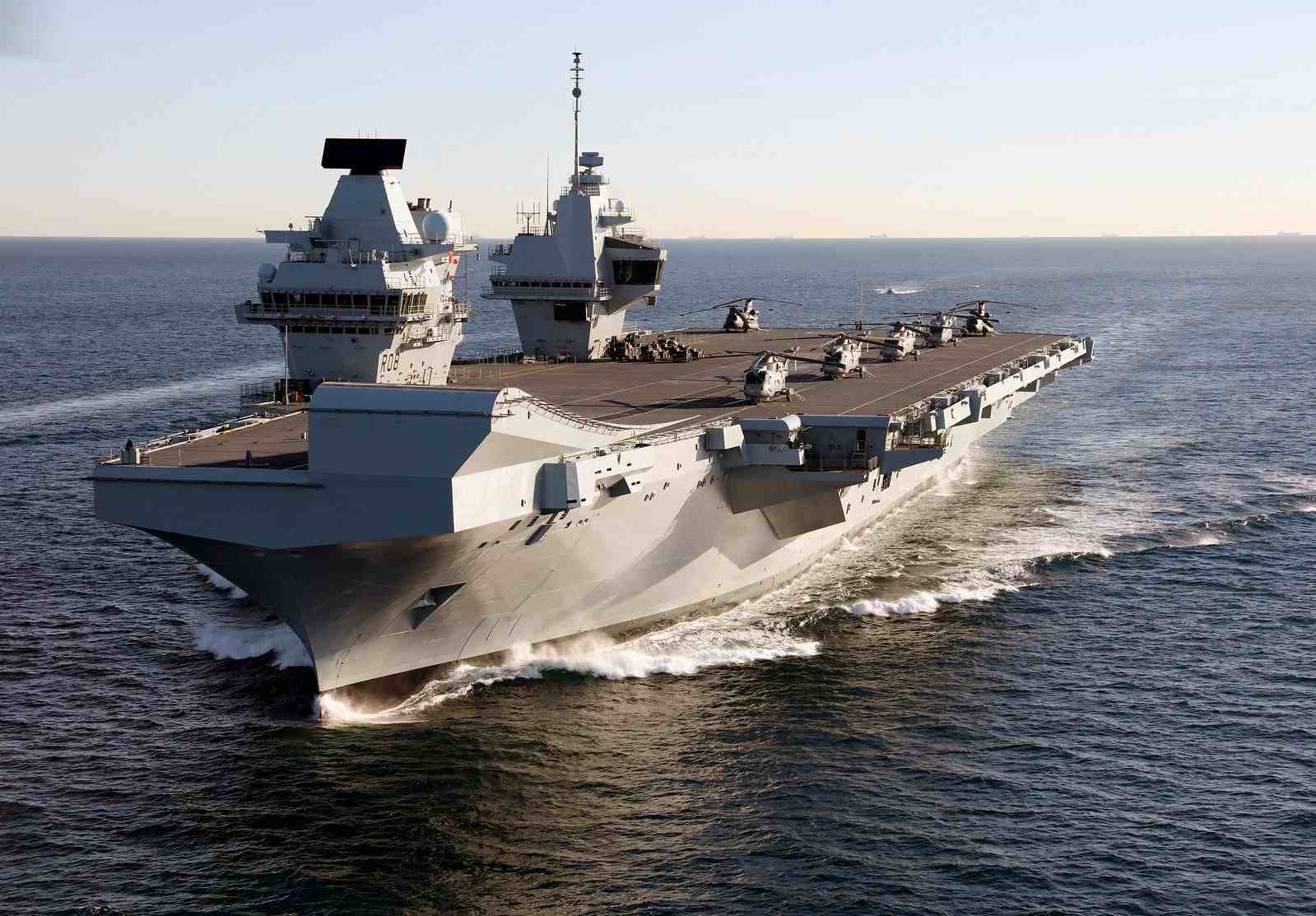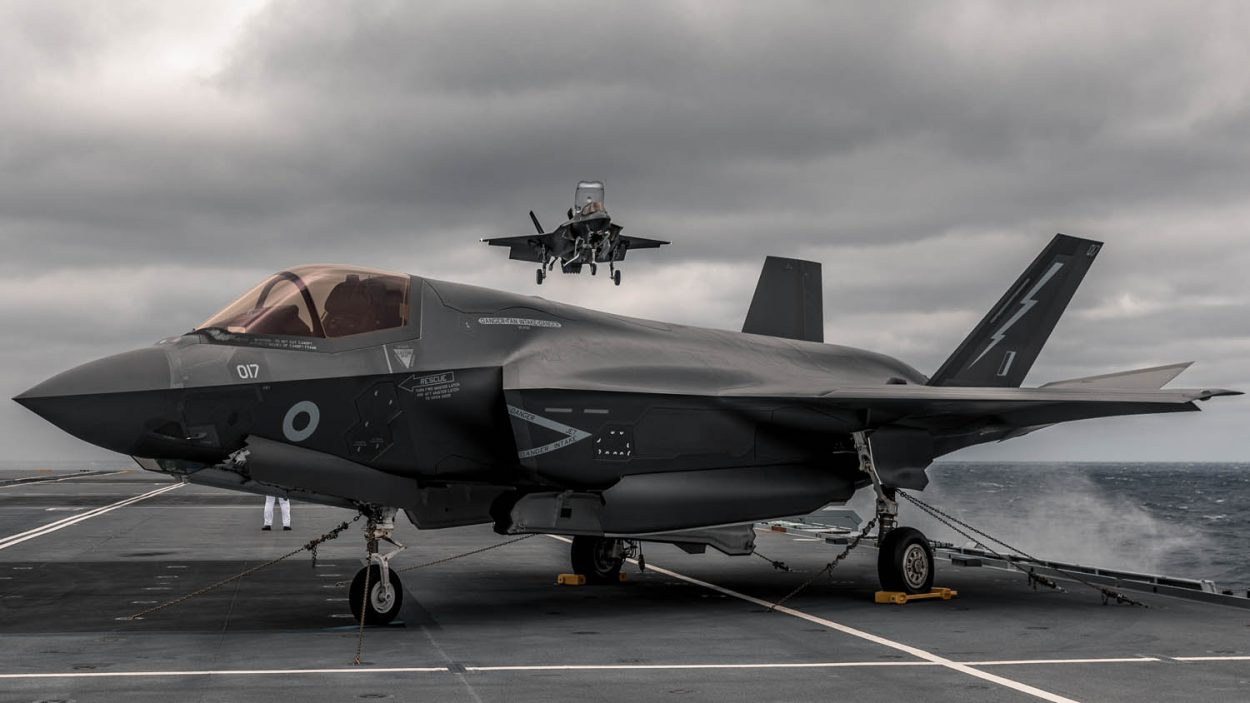A week after the British Navy aircraft carrier HMS Queen Elizabeth pulled out of NATO’s largest military exercise since the Cold War called ‘Exercise Steadfast Defender,’ the HMS Prince of Wales, which was to represent the British carrier force, also bailed out of the drills.
However, as per the latest announcement, HMS Prince of Wales has now departed Portsmouth a day late after postponing its scheduled departure.
The HMS Prince of Wales was due to replace Queen Elizabeth and was scheduled to depart Portsmouth Naval Base at noon on February 11. However, the £3 billion vessel did not leave the jetty even though Ministry of Defence (MoD) police boats secured the area and blocked off the harbor mouth to traffic, as is customary when a carrier departs.
Later, the channel was reopened, suggesting that the carrier was to remain docked. An official from the Ministry of Defense stated that the sailing has been postponed, not canceled. It is unclear whether the cancellation occurred before the carrier was scheduled to depart or if it had already started moving from the jetty.
The spokesperson said: “The aircraft carrier HMS Prince of Wales is due to sail from Portsmouth soon, subject to suitable tide and weather conditions.” The spokesperson did not explain the sailing’s last-minute postponement.
The hundreds of people lining Portsmouth Harbour’s walls started to disperse about 20 minutes after the Prince of Wales was scheduled to leave. Word got out that the 65,000-ton warship would not be leaving after all, and the PA news agency quoted one member of the public as saying, “I hope it hasn’t broken down again.”
The inability of the HMS Prince of Wales to depart for the drills after a no-show by its sister ship does not augur well for the British Navy’s reputation. The two carriers remain marred in technical problems for several months now. In August 2022, for instance, HMS Prince of Wales broke down off the Isle of Wight due to a coupling malfunction.
HMS Prince of Wales getting ready to move with tugs in position. pic.twitter.com/3CcHC1rhkb
— Britsky (@TBrit90) February 12, 2024
Former British officials and military watchers have called the situation embarrassing since the opulent British aircraft carriers, built ostensibly to give Britain dominance over the seas, have remained berthed at Portsmouth.
The Navy’s webpage refers to HMS Queen Elizabeth and HMS Prince of Wales as “investments” in the security and prosperity of the United Kingdom. Despite the hyperbole, neither carrier has approached a war zone since they were brought into service.
Most notably, the absence of British aircraft carriers (and F-35s deployed on them) has raised eyebrows among the UK’s former politicians and military watchers. Last month, the UK’s refusal to send one of its £3.5 billion aircraft carriers to the Red Sea was met with dismay from former ministers of defense and chiefs of the Royal Navy.

They expressed their regret in no ambiguous terms, stating that it was absurd that Britain continued to rely on RAF aircraft to launch airstrikes on the Houthi in Yemen, which were flying 3,000 miles from their base in Cyprus, instead of deploying one of the two carriers which would make the operations more inexpensive and convenient. It also makes all the tests conducted last year with F-35s aboard the carrier redundant.
In contrast to the no-show by British carriers, US aircraft carriers have been deployed near the Red Sea. The US has been carrying out airstrikes against Houthis using its fighter jets, taking off from its aircraft carriers. The inability of British carriers to set sail for missions that they committed to has called into question the capability of the UK to fight any actual conflict without external help.
The situation becomes even more precarious, with some experts suggesting that the abysmal condition of the UK Navy is undermining its ability to serve alongside the US Navy.
Experts have opined that the Royal Air Force (RAF) will face a massive debacle if it goes to war alone against adversaries like Russia and China. Coupled with the US presidential candidate Donald Trump’s frequent warnings about abandoning partners, the threat grows exponentially.
Sun Sets On British Empire
The UK’s Defence Committee, set up by the House of Commons, has released a detailed study that raises serious questions about the Royal Air Force’s (RAF) capacity to take on formidable opponents like China and Russia.
The committee’s conclusions indicate a possible weakness in the RAF’s readiness for peer-to-peer warfare. “The RAF’s ability to engage in peer-to-peer warfighting” has been questioned by retired General Lord Houghton and former Chief of Staff General Sir Nick Carter.
Although the RAF has state-of-the-art equipment, General Lord Houghton noted severe shortages in both platforms and people, particularly pilots.
The Defense Committee took note of the RAF’s prowess in working together in coalitions to accomplish standing assignments. Yet, questions were raised regarding the RAF’s restricted ability to carry out autonomously short-notice operations, except for Quick Reaction Alert (QRA) missions.
According to General Lord Houghton, the RAF’s operational effectiveness from the Combined Air Operations Center (CAOC) is admirable, but it becomes troublesome in ground-fighting situations.
Professor Justin Bronk, a Senior Research Fellow for Airpower and Technology at RUSI’s Military Sciences Team, concurred with the assessment during his testimony before the Committee, highlighting a significant munitions-related issue.
According to Bronk, the present inventory focuses on permissive or semi-permissive locations and targets specific threats like snipers or technicals. But Bronk emphasized the significance of gaining air superiority in a fight with a formidable foe like Russia.
He said air superiority is essential to the Western military’s operation and hinted at a possible “Russia problem” should this be achieved over specific fighting zones.
Professor Bronk also addressed the pilot shortage problem, blaming it on a lack of RAF engineers and a scarcity of spare components needed to keep the fleet going and maintain operational continuity.
Despite the anticipated launch of SPEAR CAP 3 in 2028, he also emphasized the lack of Suppression of Enemy Air Defenses/Destruction of Enemy Air Defenses (SEAD/DEAD) capability, which is made worse by the restricted quantity of F-35s.

A growing number of people have been calling for the Royal Air Force (RAF) to be strengthened since Russia invaded Ukraine on a large scale in February 2022, raising concerns about the UK’s air combat capabilities.
These requests are partially motivated by European politicians’ concerns over the possibility that Donald Trump’s election as the next US president would mean a reduction in US presence on the continent and a significant weakening of NATO.
Notably, the urgent need for more funding for the RAF has been brought to light recently by Mike Sutton, a veteran commander of a Typhoon squadron with operational experience in Afghanistan, Iraq, and Syria.
Sutton stated that the UK’s combat air assets are dispersed, creating an apparent mass problem and highlighting the effects of defense reduction. He also drew attention to the UK having just eight fighter squadrons, a sharp decrease from its 33 fighter units in 1991.
This cut calls into question the RAF’s capacity to adapt successfully to changing geopolitical conditions. Sutton emphasized how critical it is to invest in capabilities to deal with the problems of the changing security landscape.
According to Sutton, Russia’s invasion forced the West to reevaluate its use of air power, but China poses an even more severe threat that necessitates attention and readiness.
The latest report also highlighted the planned retirement of 30 Tranche 1 Typhoon aircraft in 2025, despite having significant airframe life remaining. This will reduce the active Typhoon fleet to 107. Moreover, even though it is projected that 48 F-35B aircraft will be delivered by the end of 2025, they will be flown in tandem with the Royal Navy, primarily for carrier operations.
Furthermore, the RAF has been without a dedicated Suppression of Enemy Air Defence/Destruction of Enemy Air Defence (SEAD/DEAD) capability since the Air-Launched Anti-Radiation Missile (ALARM) retirement.
Against this backdrop, the UK’s military appears to be toothless. While it may be an overreach to conclude that the British can’t close the glaring gaps, experts have continued to warn that the window is fast closing as the threat by adversaries becomes more prominent by the day.
- Contact the author at sakshi.tiwari9555 (at) gmail.com
- Follow EurAsian Times on Google News




